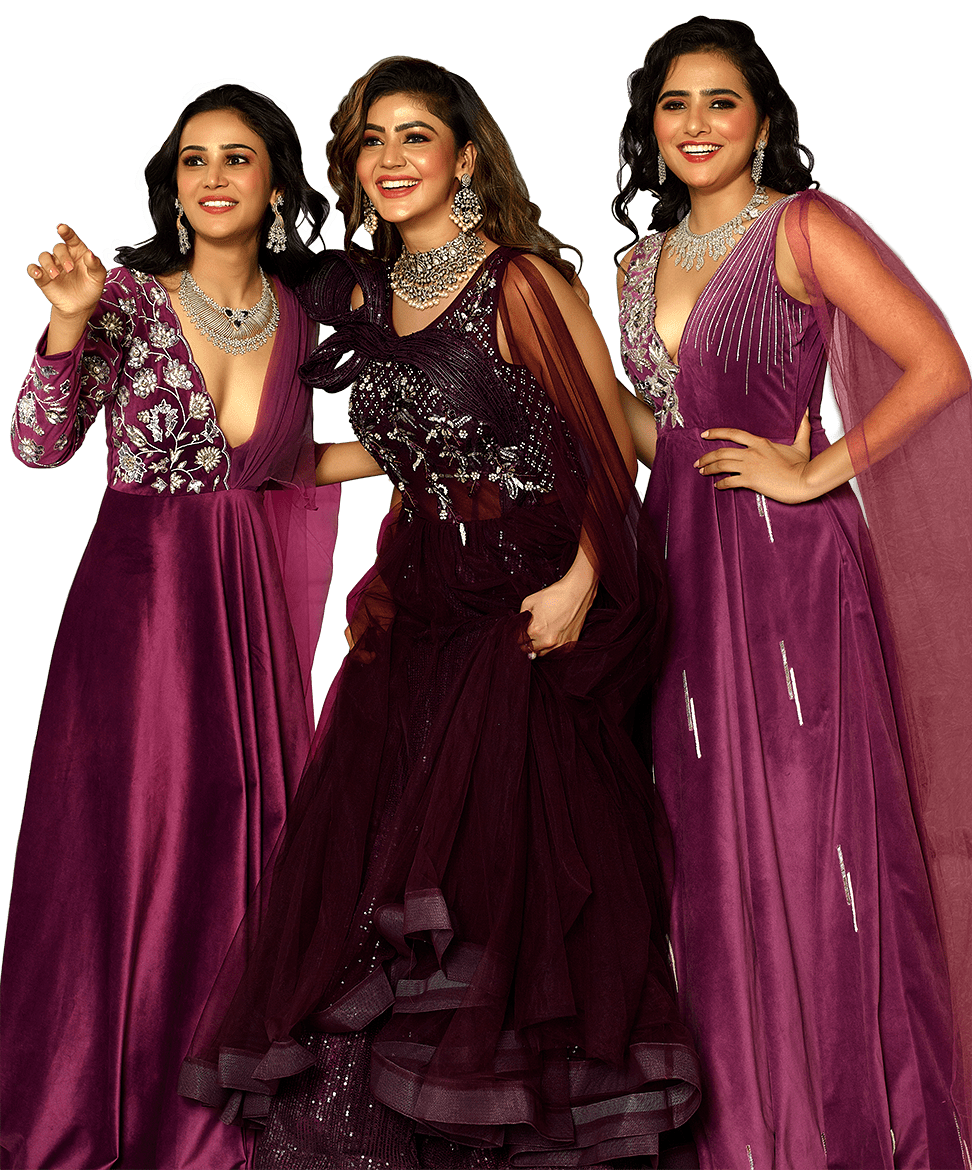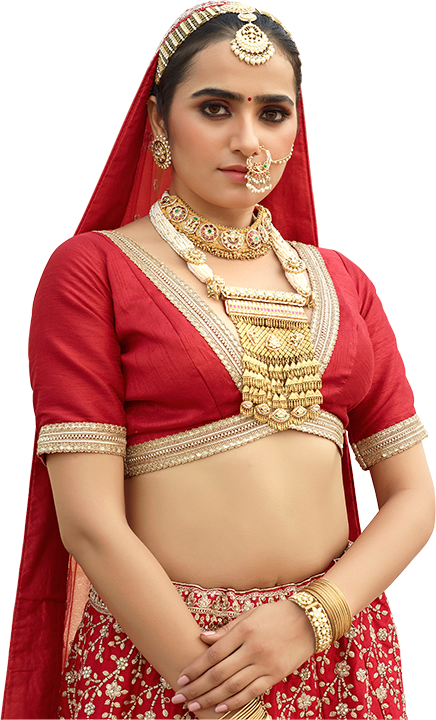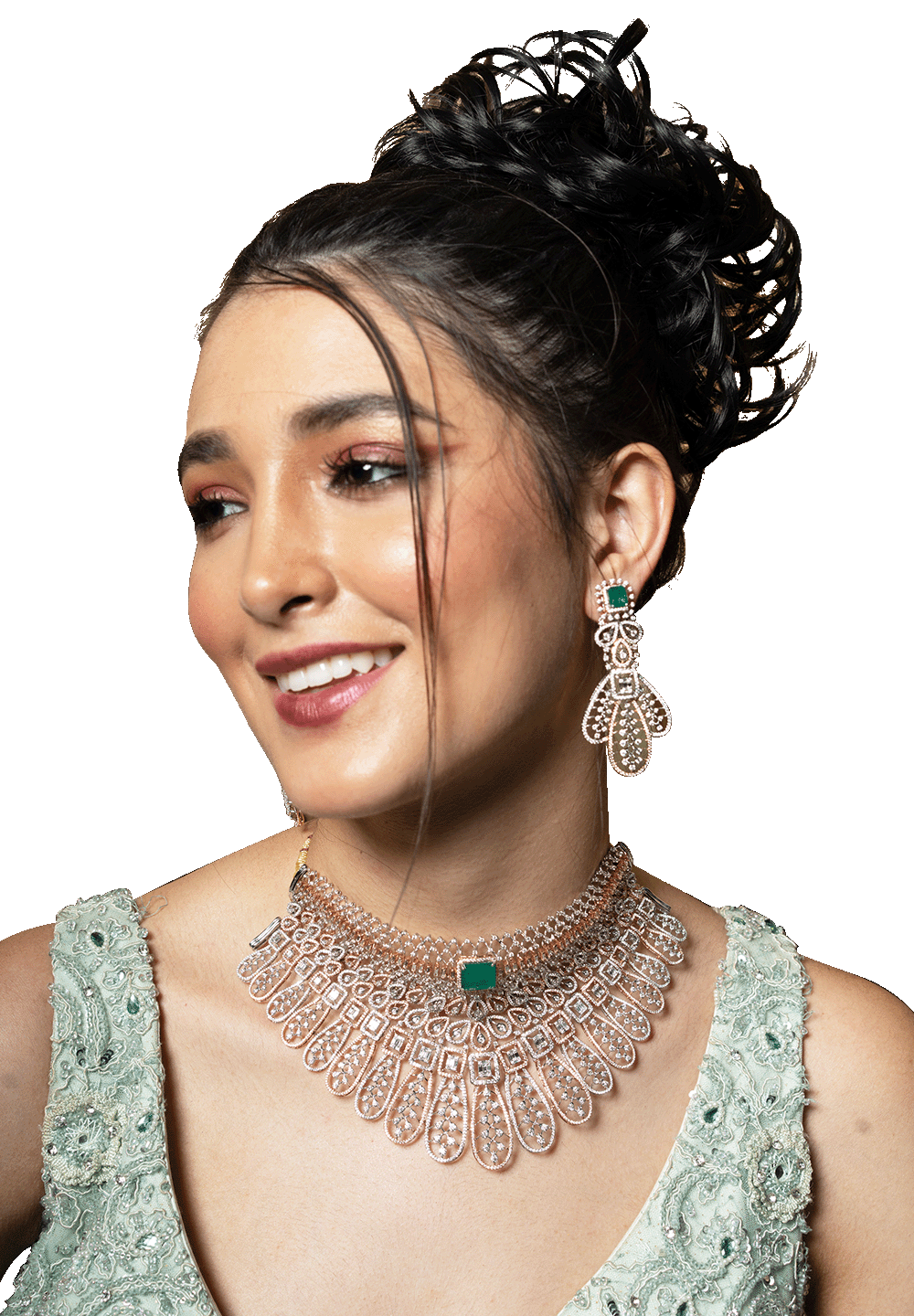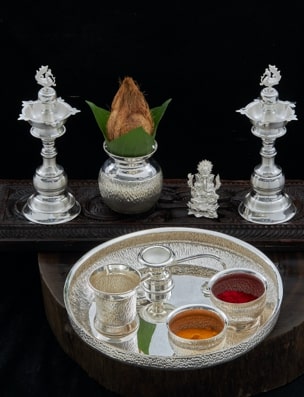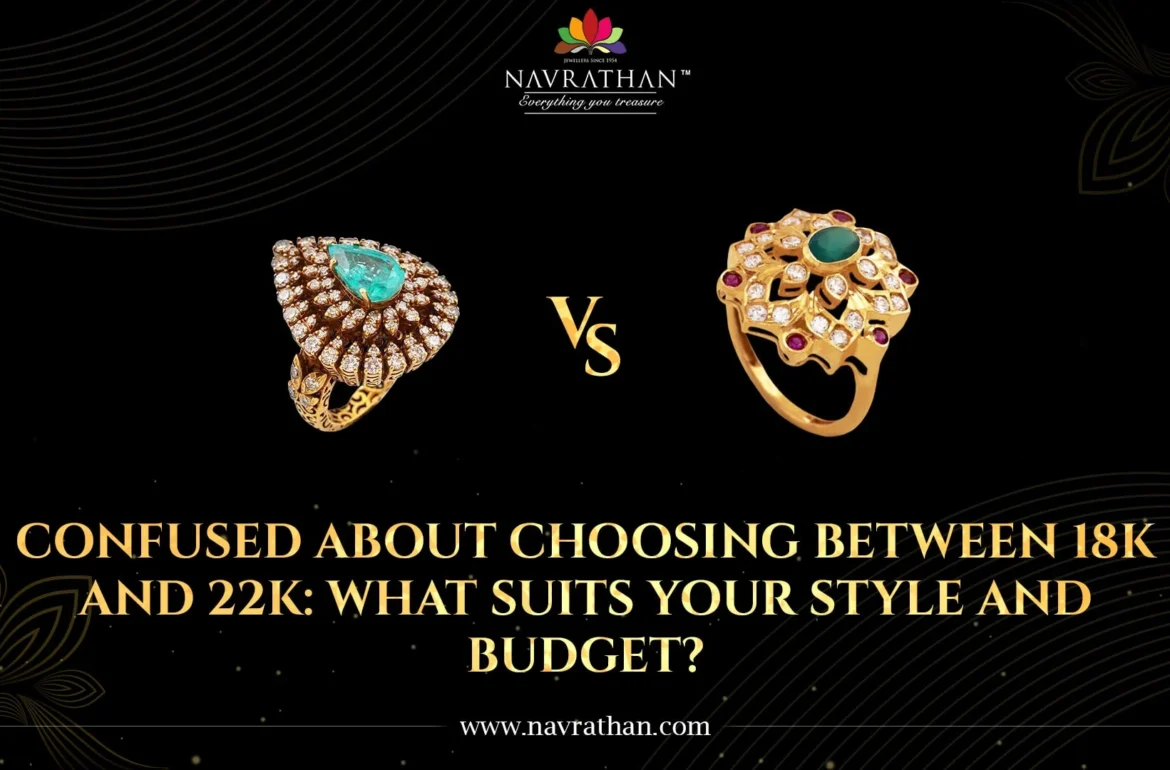
Are you stuck wondering which gold to pick — 18K or 22K? Does 18K gold shine brighter in your lifestyle, or does the rich luster of 22K gold feel more you? Choosing the right gold isn’t just about the price tag; it’s about your personality, purpose, and long-term value. You’re not alone if you’re asking, “Which is better: 18K vs 22K gold?” In this guide, we break down everything in simple terms to help you decide. Whether you’re buying your first piece or upgrading your jewellery collection, we’ll help you make a smart, stylish, and budget-friendly choice.
Understanding Gold Purity: What Do 18K and 22K Gold Mean?
Let’s decode what 18K and 22K actually mean before diving into the big 18K vs 22K gold debate.
Gold purity is measured in karats, with 24K being pure gold (99.9%). But pure gold is too soft for everyday jewellery, so it’s often mixed with other metals like copper, silver, or zinc for strength. That’s where 18K and 22K come in.
- 22K gold contains 91.6% pure gold and 8.4% alloyed metals. It’s known for its rich golden hue, making it ideal for traditional jewellery.
- 18K gold has 75% pure gold and 25% other metals. It’s more durable and perfect for modern, daily-wear jewellery.
Understanding this difference is key because purity affects not just color, but also durability, price, and how you can wear the piece. When comparing 18K vs 22K gold durability, 18K wins for everyday use, while 22K shines in heirloom-worthy designs. Let’s dive deeper.
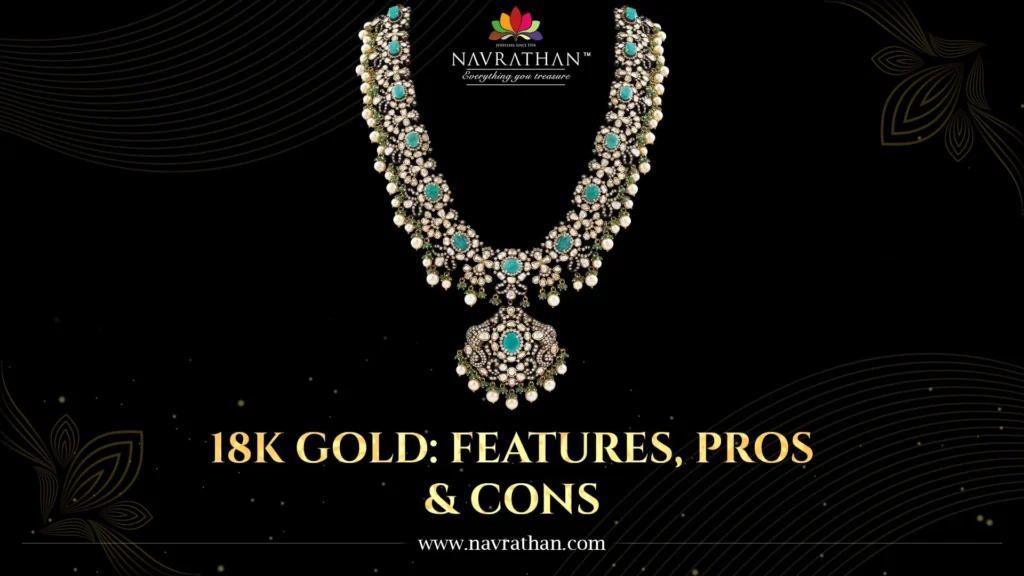
18K Gold: Features, Pros & Cons
If your life is fast-paced and fashion-forward, 18K gold might be your golden match. Here’s why:
Features of 18K Gold:
- 75% pure gold, 25% alloy
- Stronger than 22K due to added metals
- Subtle yellow tone, often used in designer and diamond jewellery
- Less prone to scratches or dents
18K Gold Benefits:
- Ideal for daily wear: Whether you’re working, traveling, or parenting — 18K gold keeps up.
- Great for gemstone settings: Diamonds, sapphires, and rubies sit more securely in 18K settings.
- Less expensive: 18K gold costs less than 22K, making it wallet-friendly.
- Modern aesthetics: Perfect for sleek, stylish, and minimalistic designs.
Cons of 18K Gold:
- Less pure than 22K
- May not have the traditional golden glow
- Slightly less investment value in terms of resale
Still, if you’re thinking about 18K vs 22K gold durability, 18K is clearly stronger and longer-lasting. It’s a go-to option for engagement rings, contemporary pieces, and jewellery you want to wear often. Do you want beauty and strength in one piece? If yes, 18K gold could be the smart choice.
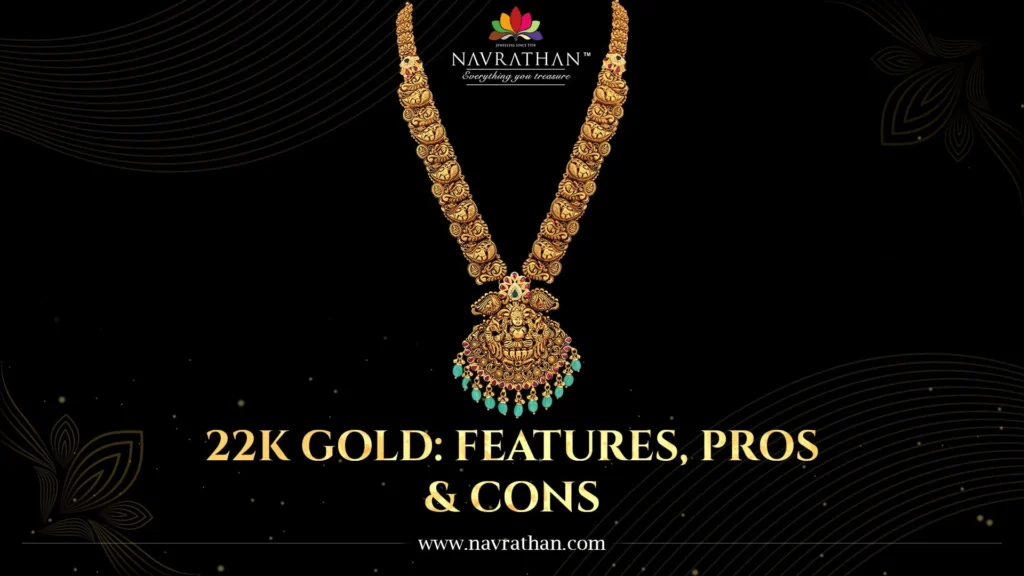
22K Gold: Features, Pros & Cons
If you’re drawn to rich tradition and timeless elegance, 22K gold speaks your language. Let’s see how it holds up.
Features of 22K Gold:
- 91.6% pure gold
- Softer and more malleable than 18K
- Bright yellow hue
- Often used in Indian bridal and traditional jewellery
22K Gold Benefits:
- More pure: Almost close to 24K, giving it rich value.
- Classic appeal: Perfect for heritage pieces and cultural occasions.
- Better resale value: High gold content often means better returns.
- Cultural significance: A preferred choice for weddings and festivals.
Cons of 22K Gold:
- Not ideal for everyday use due to softness
- Gemstone settings may loosen over time
- Can scratch or bend more easily
When it comes to 18K vs 22K gold durability, 22K is slightly more delicate. But if you’re buying jewellery for special occasions or as an heirloom, its purity and charm are unmatched. So, are you buying gold for beauty, tradition, or investment? If you love timeless pieces with sentimental value, 22K gold is a wonderful option.

Which is Better for You: 18K Gold vs 22K Gold?
Now comes the big question — 18K vs 22K gold: which one should you choose? Start by thinking about your lifestyle. Are you someone who wears jewellery daily, even to work or the gym? Then 18K gold is practical, durable, and stylish enough for constant use. It’s also easier on the wallet and great for pairing with gemstones.
But if you’re investing in something traditional, a wedding gift, or a statement piece for special events, 22K gold might feel more luxurious. Its purity and glow are hard to beat when you’re dressing for culture and celebration.
Also consider 18K vs 22K gold durability — if that matters more to you, go for 18K. But if emotional and cultural value tops your list, 22K will feel more meaningful. Think of gold not just as jewellery, but as a story. What story do you want to wear?
Expert Tips to Choose the Right Gold
Still confused? Here are 5 expert tips to make the 18K vs 22K gold decision easier:
1. Match Gold to Your Lifestyle – If you’re always on the move and prefer low-maintenance pieces, 18K gold benefits you more with durability and comfort.
2. Know Your Purpose – Are you buying for everyday use, gifting, or investment? For long-term everyday use, 18K is best. For gifting or special occasions, consider 22K.
3. Consider Budget Smartly – If you’re price-conscious but don’t want to compromise on elegance, 18K gold gives you the look and feel of luxury without the high cost. It’s a smarter spend in the long run.
4. Evaluate Design Preferences – Do you prefer detailed and heavy traditional designs? Then 22K gold is ideal. Want sleek, modern aesthetics? 18K shines brighter for contemporary fashion.
5. Think Long-Term Value & Maintenance – When thinking about 18K vs 22K gold durability, 18K wins for sturdiness. But 22K may offer better resale due to its purity. Balance both based on how long you intend to keep or wear it.
Choosing gold doesn’t have to be confusing. Use your heart — and a little expert advice — to find the karat that suits you.

Conclusion
Choosing between 18K vs 22K gold isn’t just about numbers — it’s about your story, your style, and how you want to wear your shine. Whether you lean towards the sturdy brilliance of 18K or the royal glow of 22K, each has its own charm and purpose. Remember to align your pick with your lifestyle, budget, and preferences. And above all, let your gold reflect you. Because at the end of the day, jewellery isn’t just an accessory — it’s an extension of who you are.
At Navrathan, the best online jewellery shop in India, we’ve delighted India’s gold connoisseurs for decades with breathtaking designs, intricate craftsmanship, and ancient techniques. Our collections are a rich blend of 18K vs 22K gold, offering both modern marvels and traditional beauty.
Explore how we fuse temple jewellery designs into contemporary settings — from meenakari, kundan, to polki — every piece tells a story. Whether you’re dressing up for a wedding or elevating your everyday look, Navrathan brings you gold, diamond, and platinum jewellery that speaks to the modern woman’s soul. Discover a world where tradition meets trend — only at Navrathan.
FAQs
1. Is it better to buy 22K or 18K Gold?
Choosing between 22K and 18K gold depends on your needs. 22K gold offers higher purity, making it ideal for traditional jewellery and investment. However, 18K gold is more durable and better suited for daily wear or studded designs. Go with what matches your lifestyle and purpose.
2. Does 18K gold look cheap?
Not at all. 18K gold has a rich, elegant finish that’s slightly lighter in color than 22K but still luxurious. It’s widely used in fine jewellery and designer collections. With good craftsmanship, 18K gold looks premium and stylish—never cheap or dull in appearance.
3. Which is better, 18K or 20K gold?
18K gold is stronger and more durable, making it better for regular use. 20K gold has higher purity but is softer and less common in the market. If you’re looking for style, durability, and affordability, 18K is the more practical and widely available option.
4. Is 18K gold OK for daily wear?
Yes, 18K gold is excellent for daily wear. It contains 75% gold and 25% alloyed metals, giving it strength and resistance to scratches. It’s perfect for rings, chains, and earrings worn regularly, offering a great balance between beauty, durability, and long-term value.

